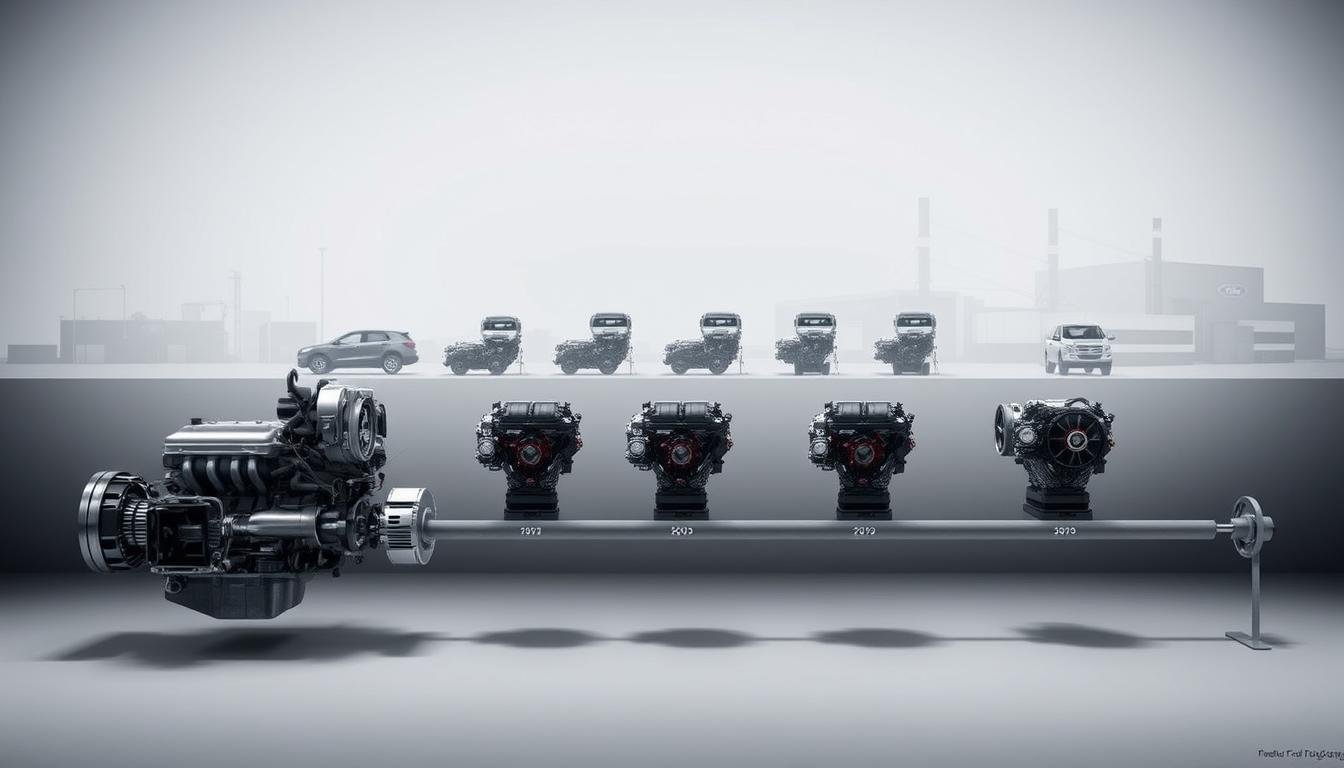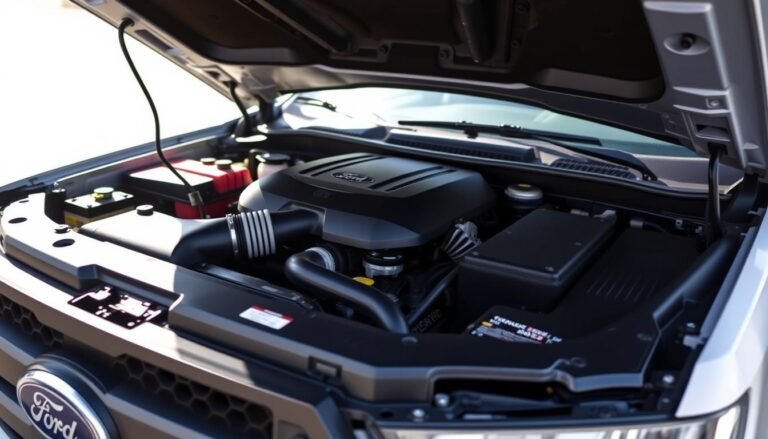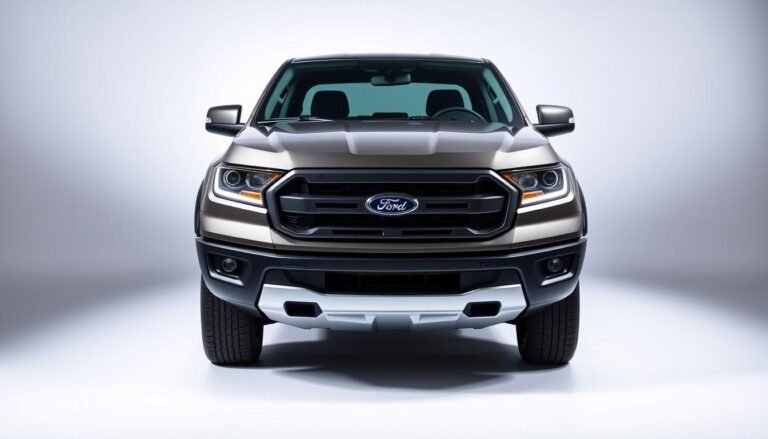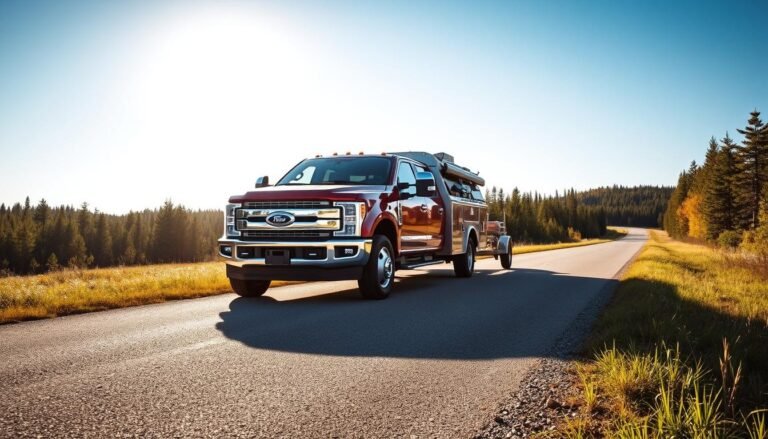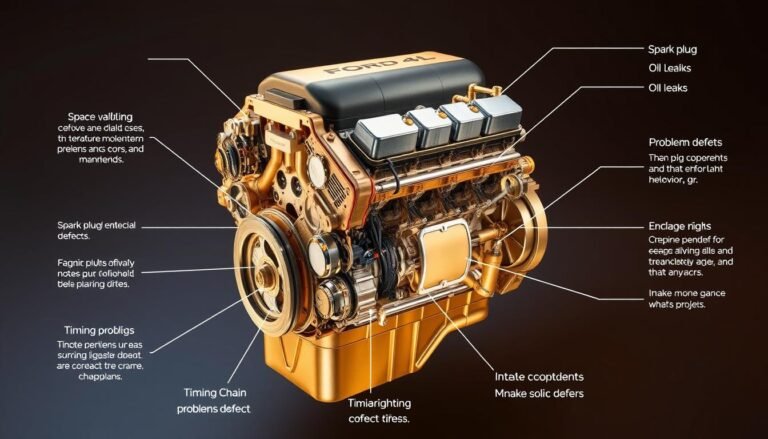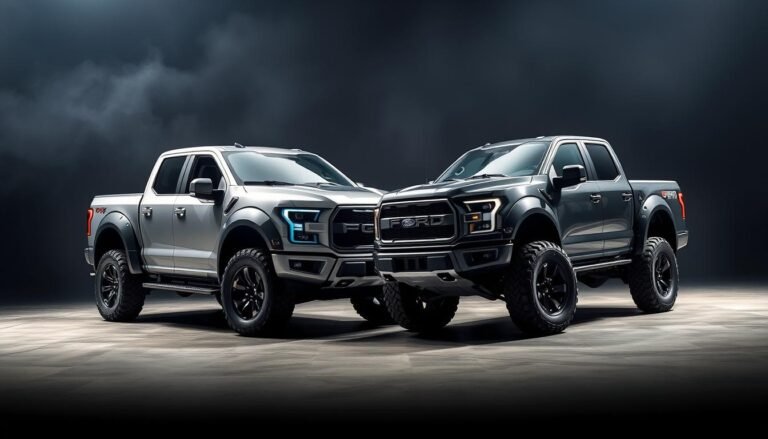When Did Ford Stop Making The 7.3L? Production Year Revealed
The Ford 7.3L Power Stroke engine was known for its strength and performance. It stopped being made in 2003, ending its production.
You might wonder why this engine was so popular and when it was last made. This engine was built from 1994.5 to 2003 for the North American market.
Over two million units were made, making it a favorite among truck fans. The end of the 7.3 engine year marked the end of a great legacy and a change in Ford’s engineering focus.
In this article, we’ll look at the 7.3L’s history, specs, and performance. Knowing these details helps understand its reliability and why it’s loved by diesel fans.
We’ll also explore its legacy and common issues drivers faced.
Introduction To The Ford 7.3L Power Stroke Engine
The Ford Power Stroke 7.3 introduction was a big deal in 1994. It was made to beat competitors like Cummins in performance and reliability.
It has features like direct fuel injection for better fuel use. The Hydraulic Electronic Unit Injection (HEUI) system is a key innovation.
It ensures the engine gets the right amount of fuel, no matter the conditions. This makes the engine powerful and eco-friendly.
It’s known for being tough, which is why truck fans and fleets love it.
Years later, the Ford 7.3L engine has a loyal fan base. People like how it performs well and is durable. It’s great for hard work, making it a topic of interest in diesel engine talks.
History of The 7.3L Power Stroke Engine
The 7.3L Power Stroke engine was a big step forward in the car world. Ford made it with Navistar’s help. It came out in 1994, moving away from the old 7.3L IDI engine.
This change brought better performance and reliability. It met the need for strong and dependable diesel engines.
Truck fans and business users loved the 7.3L right away. Its strong build and high torque made it famous. It showed Ford’s commitment to making great engines.
The 7.3L Power Stroke had new fuel injection tech. This made it burn fuel better and cut down on emissions. It was a hit with people and met government rules too.
It stayed popular until 2003. Even after it stopped being made, its good name stuck around.
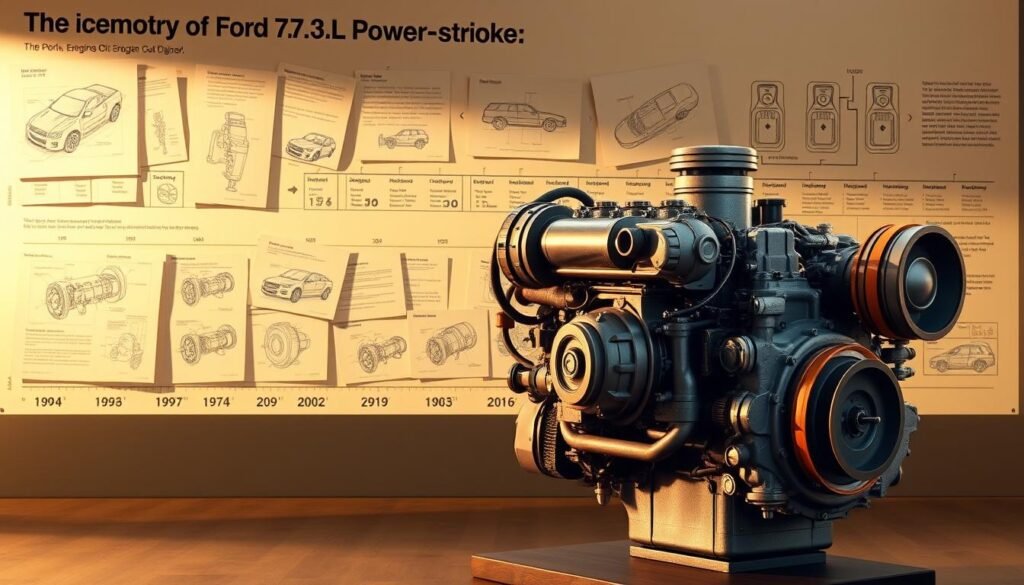
| Year | Key Development | Impact |
|---|---|---|
| 1994 | Introduction of the 7.3L Power Stroke | Set new performance standards in diesel engines |
| 1997 | Increased horsepower | Enhanced appeal for both consumers and commercial use |
| 2003 | Discontinuation | Legacy cemented as one of the most respected engines |
Specifications of The 7.3L Engine
The Ford 7.3L Power Stroke engine is a marvel of design and engineering. It’s a V8 engine with a 444 cubic inch displacement.
This makes it a top pick for heavy-duty vehicles. Let’s dive into what makes this engine so capable.
| Specification | Details |
|---|---|
| Bore | 4.11 inches |
| Stroke | 4.18 inches |
| Compression Ratio | 17.5:1 |
| Power Output | 210hp to 275hp |
| Torque Output | 425lb-ft to 525lb-ft |
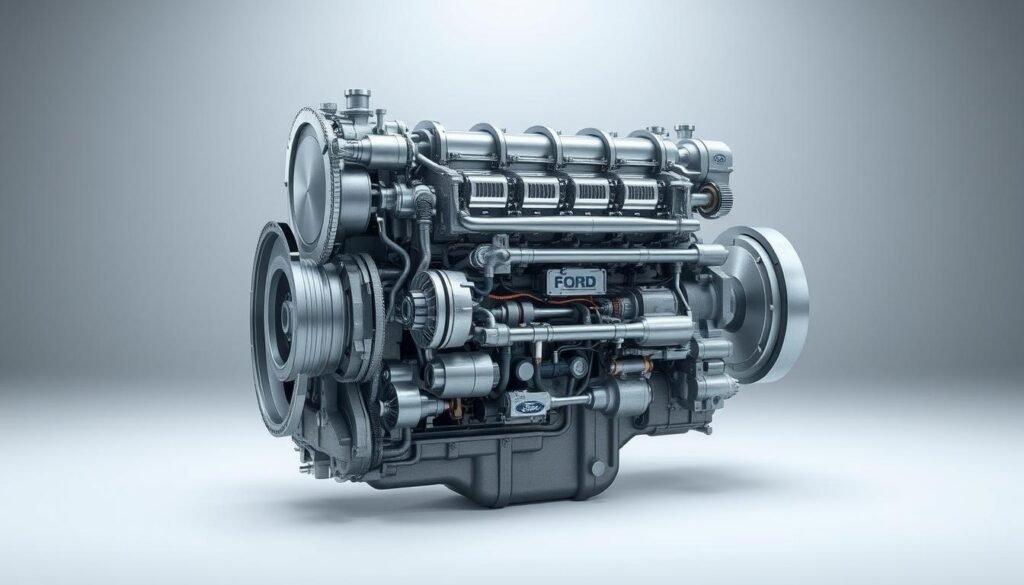
This engine’s strong build makes it reliable, even under heavy loads. By looking at these specs, you’ll see why the 7.3L engine is a lasting legend.
Performance Ratings Over The Years
The Ford 7.3L Power Stroke engine first appeared in 1994. It started with 210 horsepower and 425 lb-ft of torque. These numbers were a good start for future upgrades.
As technology got better, so did the engine. By 2003, it had 275 horsepower and 525 lb-ft of torque.
This big jump came from new fuel injection and turbocharging. These changes made the engine more efficient and powerful.
| Year | Horsepower | Torque (lb-ft) |
|---|---|---|
| 1994 | 210 | 425 |
| 2003 | 275 | 525 |
The engine’s growth shows how it met the need for more power and efficiency. These updates helped make the Ford 7.3L a favorite among truck fans and workers.
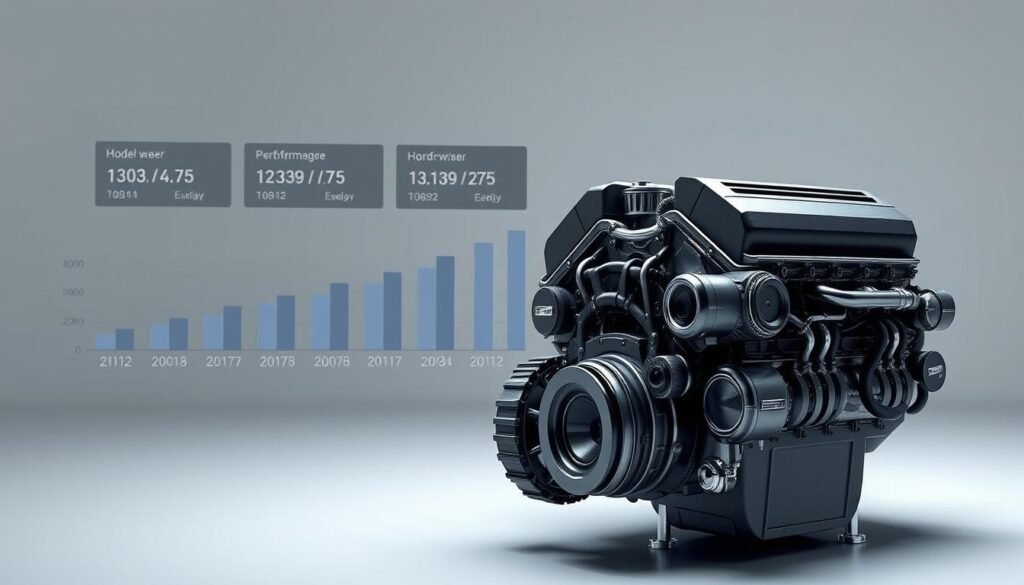
Production Timeline For The 7.3L
The Ford 7.3L Power Stroke engine is a key part of diesel engine history. It was made from 1994.5 to 2003.
This shows Ford’s dedication to meeting market needs, like better performance and cleaner emissions.
From 1994.5 to 2003, the engine got many updates. The first version came out in 1994.5 in Ford Super Duty trucks. It was known for being tough.
By 1999, the engine got better fuel injection and more power, thanks to customer feedback. The early 2000s were the best years for the 7.3L engine.
It was a top pick for heavy-duty jobs. But by 2003, Ford stopped making it. They started using the 6.0L Power Stroke engine instead, with newer tech and designs.
| Year | Key Developments |
|---|---|
| 1994.5 | Introduction of the 7.3L engine in Super Duty trucks. |
| 1999 | Fuel injection system improvements and increased horsepower. |
| 2001 | Enhanced turbocharger for improved performance. |
| 2003 | Final production year before transitioning to the 6.0L engine. |
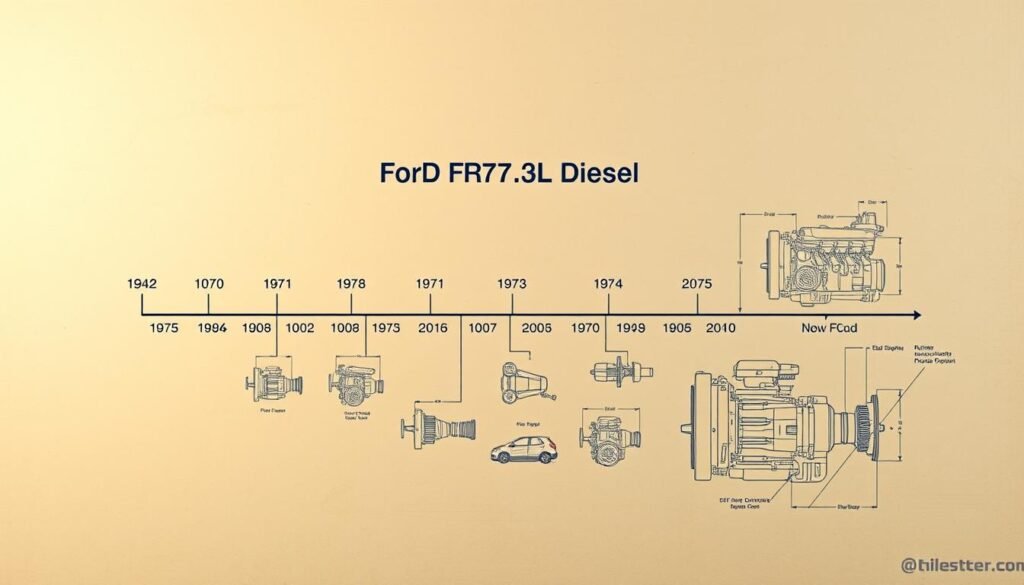
When Did Ford Stop Making The 7.3?
The Ford 7.3L Power Stroke engine was a big step in diesel tech for Ford trucks. It stopped being made in 2003 because of new emissions rules.
This change shows how the car market’s needs, like environmental rules, keep evolving.
Details on The Discontinuation Year
In 2003, Ford stopped making the 7.3L Power Stroke engine. This choice was hard, as many loved its dependability and toughness.
But, it couldn’t meet the new emissions rules. So, Ford started using newer tech.
Transition To The 6.0L Power Stroke
After the 7.3L engine stopped, Ford brought in the 6.0L Power Stroke. The 6.0L had cool tech like variable geometry turbocharging and better fuel use.
It fixed the old engine’s problems. This move showed Ford’s dedication to progress and meeting tough rules.
Legacy of The 7.3L Power Stroke
The Ford 7.3 legacy is big in the car world, loved by diesel fans. It’s known for being one of the most reliable diesel engines out there.
Many trucks with this engine have gone over 400,000 miles, proving it lasts a long time. Its fans are many, thanks to the wide range of aftermarket parts and support.
Owners love to keep and improve their 7.3L engines. This adds to the culture of high-performance diesel trucking.
The 7.3L Power Stroke engine’s impact goes beyond just numbers. Drivers love its easy maintenance and strong performance.
It’s reliable and powerful, making it great for work or play. The Ford 7.3’s lasting legacy shows its engineering quality and its influence on diesel performance’s future.
Common Issues and Insights onThe 7.3L Engine
The Ford 7.3L Power Stroke is known for its toughness. Yet, it faces some common problems. Issues often pop up in the HEUI injection system.
The Injection Control Pressure (ICP) sensor might fail, causing performance drops. The Injector Driver Module (IDM) is another area of concern.
If it breaks down, it can lead to starting troubles or misfires. Keeping up with regular maintenance is key.
This includes oil changes and checking high-pressure parts to avoid engine troubles. Watch out for signs like odd engine sounds or fuel efficiency changes.
Fixing these issues early can stop bigger problems. It helps keep your Ford 7.3L engine running smoothly for a long time.
Aftermarket Support For The 7.3L Engine
The 7.3L Power Stroke engine has a lot of aftermarket support. This means many options to boost its performance and reliability.
Drivers often look for aftermarket parts to make their vehicle better for driving on and off the road.
These upgrades include performance chips, better turbochargers, and high-flow exhaust systems. They can greatly increase the engine’s horsepower and torque.
Brands like BD Diesel and DP-Tuner make parts to improve engine performance. They focus on making sure the engine lasts long and works well.
When looking to upgrade your Ford 7.3, think about things like compatibility and how easy it is to install. Also, read what other customers say to make a good choice.
Many people use these aftermarket parts to reach their performance goals. They keep the engine reliable, just like it’s known to be.
Conclusion
The Ford 7.3L Power Stroke engine is a top choice in the diesel world. Even though it’s no longer made, its story of innovation and durability lives on.
It has a dedicated fan base that celebrates its legacy. With the introduction of newer engines, Ford’s diesel strategy has changed.
Yet, the 7.3L engine remains dear to many truck lovers. It’s a testament to the engine’s lasting appeal.
Knowing the 7.3L’s history, specs, and maintenance is key for owners and buyers. This knowledge helps you get the most out of your engine. It ensures it runs well for years to come.
Looking back, the 7.3L engine’s reputation is strong. It’s supported by a wide aftermarket that caters to all. This shows its lasting impact on the diesel community.
The Ford 7.3L Power Stroke engine is more than just a motor. It represents a deep passion for durability and function.
As time passes, it will remain a favorite among diesel fans, showing that excellent engineering never fades.
FAQs
Q: When did Ford stop making the 7.3L Power Stroke engine?
A: Ford stopped making the 7.3L Power Stroke engine in 2003.
Q: What was the production end date for the Ford 7.3 engine?
A: The Ford 7.3 engine’s production ended midway through 2003.
Q: What year was the Ford 7.3 engine discontinued?
A: The Ford 7.3 engine was officially discontinued in 2003.
Q: Can you provide a timeline for the discontinuation of the Ford 7.3 engine?
A: The Ford 7.3 engine was made from 1994.5 until 2003. It served for nearly a decade.
Q: What led to the retirement of the Ford 7.3 engine?
A: It was retired because it couldn’t meet new emissions standards. This led to the 6.0L Power Stroke’s introduction.
Q: What is the lifespan of a Ford 7.3 engine?
A: Many Ford 7.3 engines last over 400,000 miles. They show great longevity and reliability.
Q: Why is the Ford 7.3L Power Stroke engine considered a benchmark?
A: It’s seen as a benchmark for its strong build, performance, and ongoing aftermarket support.
Q: What common issues should owners be aware of regarding the 7.3L engine?
A: Issues include problems with the HEUI injection system. This includes the ICP sensor and IDM.
Q: What aftermarket support is available for the Ford 7.3L engine?
A: There’s a lot of aftermarket support. This includes performance chips, turbo upgrades, and exhaust systems from brands like BD Diesel and DP-Tuner.

